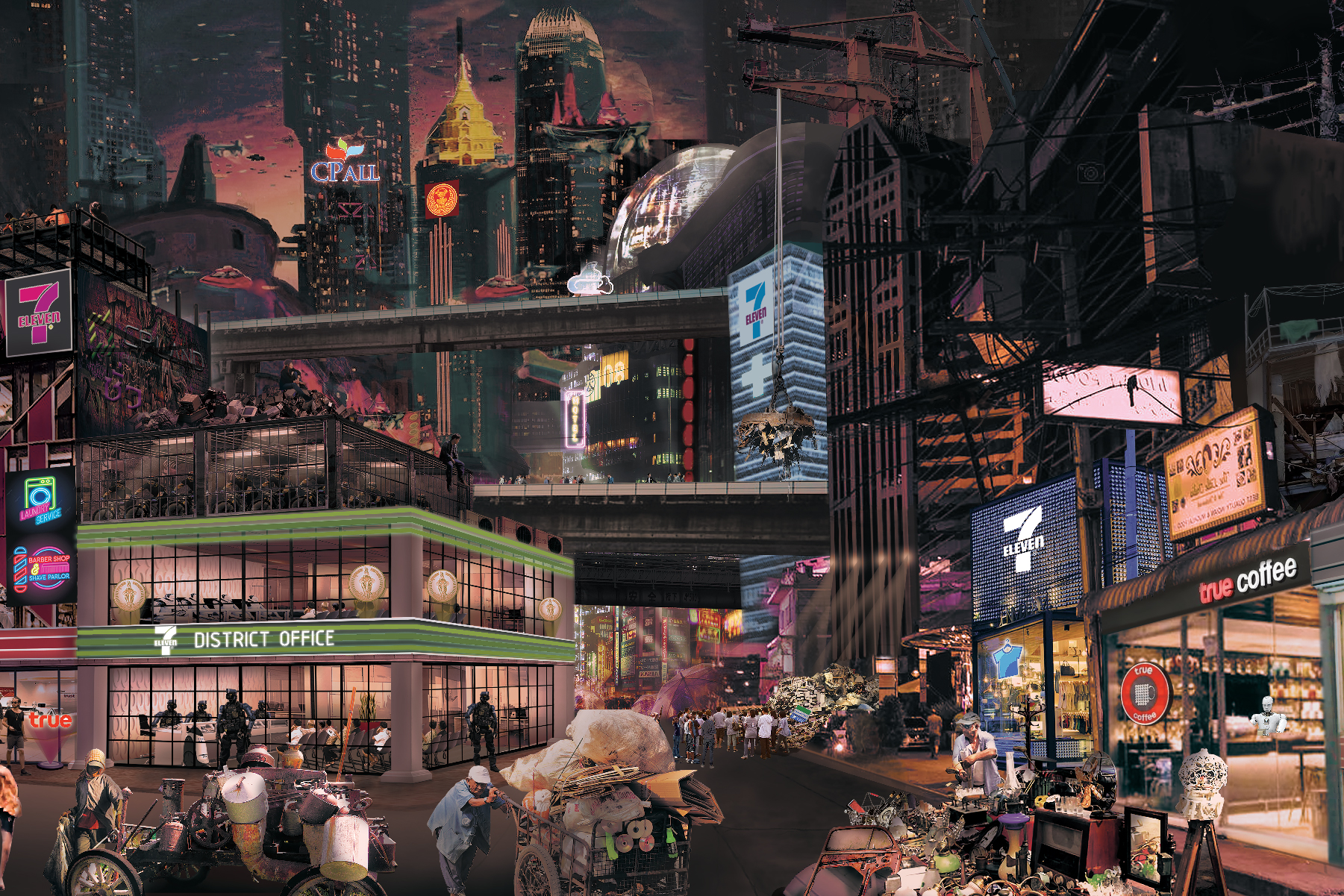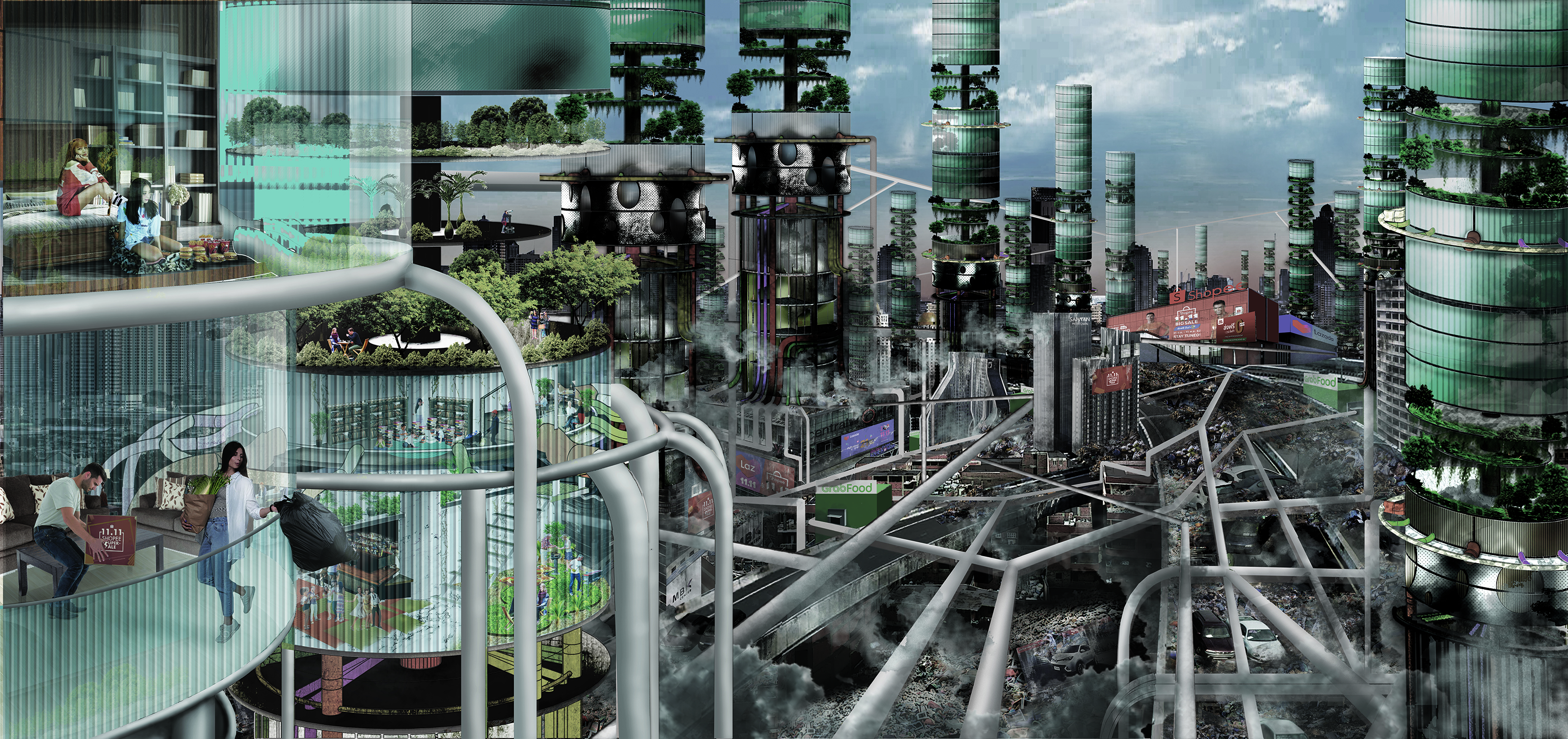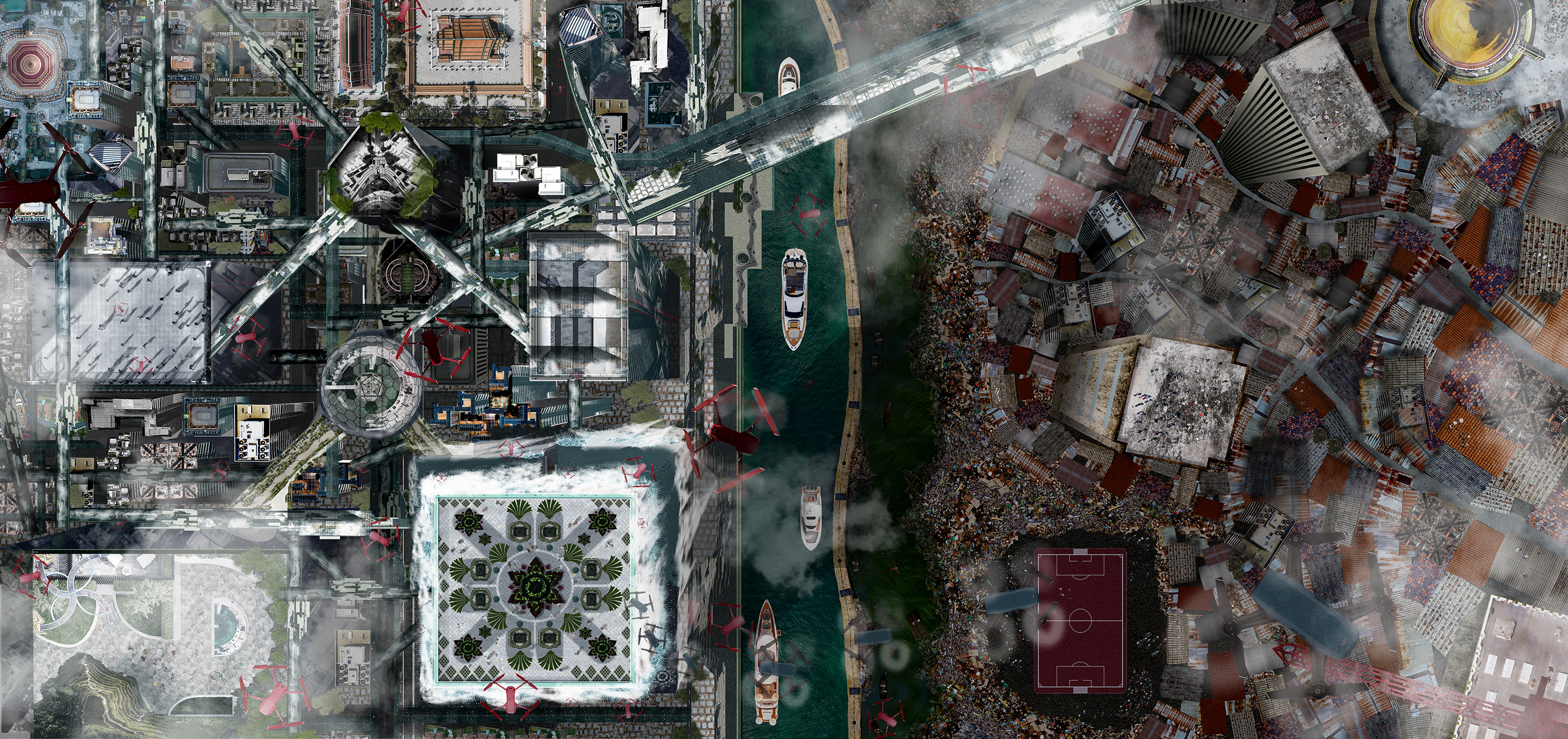‘WHAT WOULD BANGKOK LOOK LIKE IN THE YEAR 2600?’ IS THE CORE AND PRIMARY QUESTION OF THE WORKSHOP ‘FICTIONAL REALITY ARCHITECTURE’ CO-HOSTED BY SUPERMACHINE STUDIO AND LED BY PITUPONG CHAOWAKUL TOGETHER WITH THE DEPARTMENT OF ARCHITECTURE OF KASETSART UNIVERSITY’S FACULTY OF ARCHITECTURE
TEXT: PAPHOP KERDSUP
PHOTO COURTESY OF THE DESIGNERS
(For Thai, press here)
‘What would Bangkok look like in the year 2600?’ is the core and primary question of the workshop ‘Fictional Reality Architecture’ co-hosted by Supermachine Studio and led by Pitupong Chaowakul together with the Department of Architecture of Kasetsart University’s Faculty of Architecture. The workshop invites 10 students to, in their own ways and with their own ideas, create their own design fictions that tell stories that imagine the future of the city of Bangkok with the current economic, social, political and environmental situations being the ground from which the speculations (and imagination) are made about the future of the city.
The Bangkok that the 10 students of Kasetsart University imagined and visualized shared one interesting common characteristic, which is the failure of the state and its inability to handle the country’s problems and issues; from the fine dust and air pollution crisis in Blurry City to the city where inequality is pushed to the extreme with corruption and wrongly used social credit in the VIP Territory.
The significant power of monopolistic businesses, and the vehement shift in people’s behaviors propelled by modern technologies are among the interesting issues that are presented in the fictions. Delivery Bangkok is the story of a city where people stop coming out of their homes and the rise of online shopping ceases the use of public transportation. Created as a result is the city that is equipped pipeline system for goods to be delivered. Slave Farming Metropolis imagines the city where people return to the country’s agricultural root as future farmers who produce and export their products to China. Thailand Co., Ltd. envisions the country being under a complete monopolization by one single corporation and where robots replace all human laborers.
To discuss the creative process of design fiction (a fusion of literature and design) that has long been used as the framework for designers to ask questions about different possibilities for the future, whether it’s through scenarios, or speculative designs (some of which end up becoming prototypes of actual inventions), one interesting thing about all of this is how the ‘changes’ that have been used to help these designers imagine the future are mostly negative. The visions for Bangkok in 2600 also seems to be imagined out of limitations and conditions of a dystopia. It really gets us thinking about the possibility of Thailand becoming what the participants of this workshop imagine it will be, and what solutions we can come up with to deal such a probable reality or should we start tackling sources of the problems right now to prevent them from becoming out of control and ultimately unfixable.




